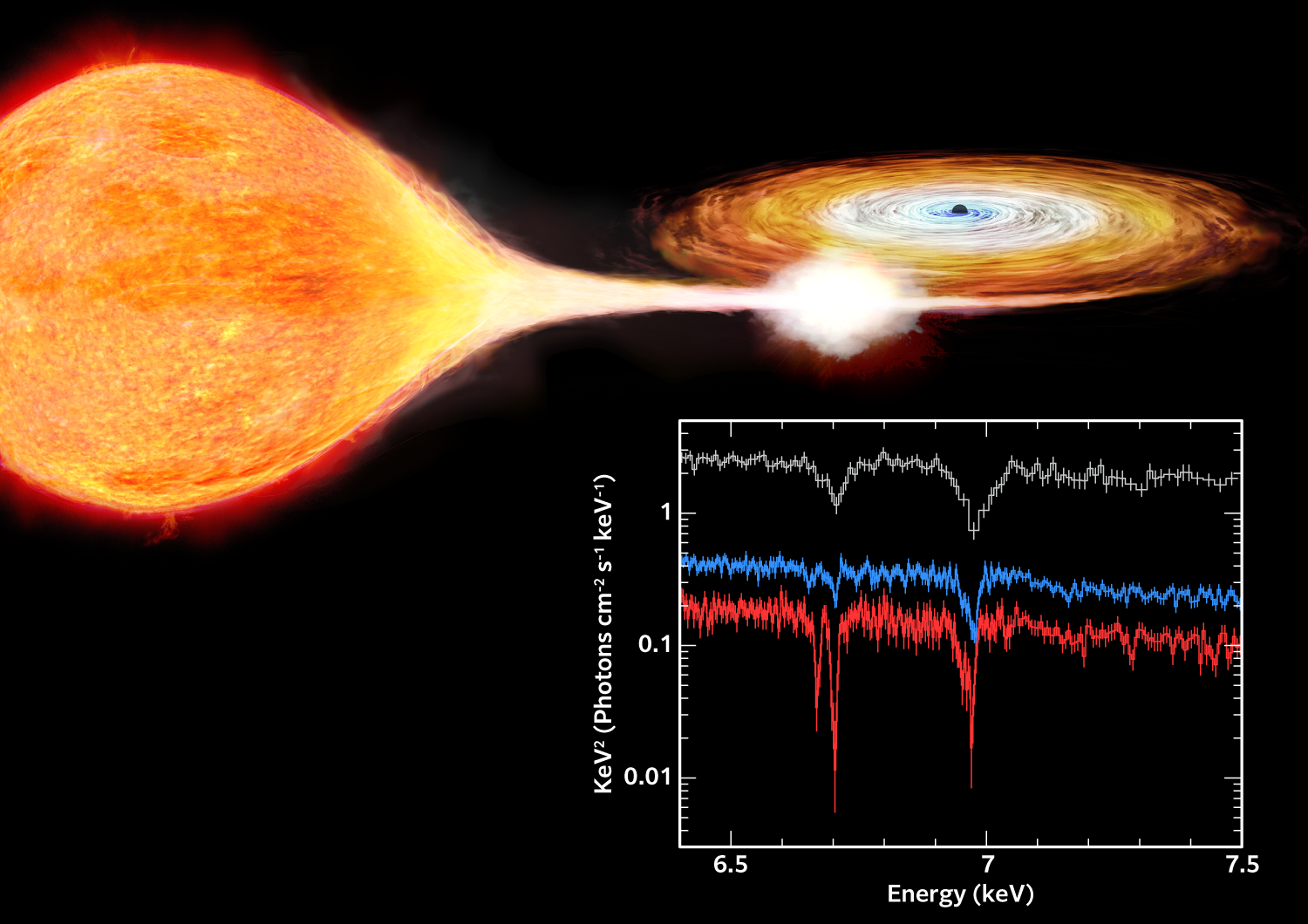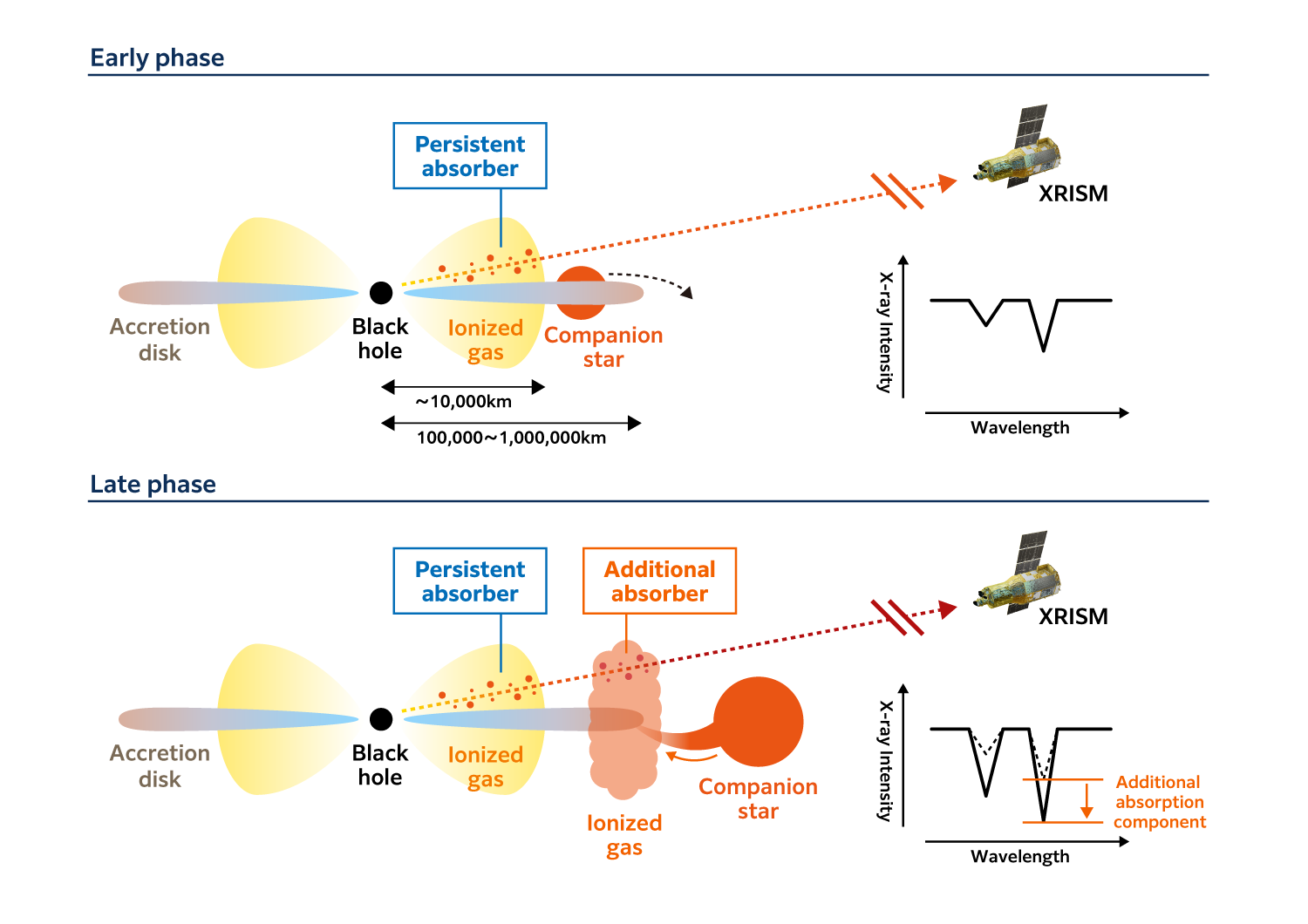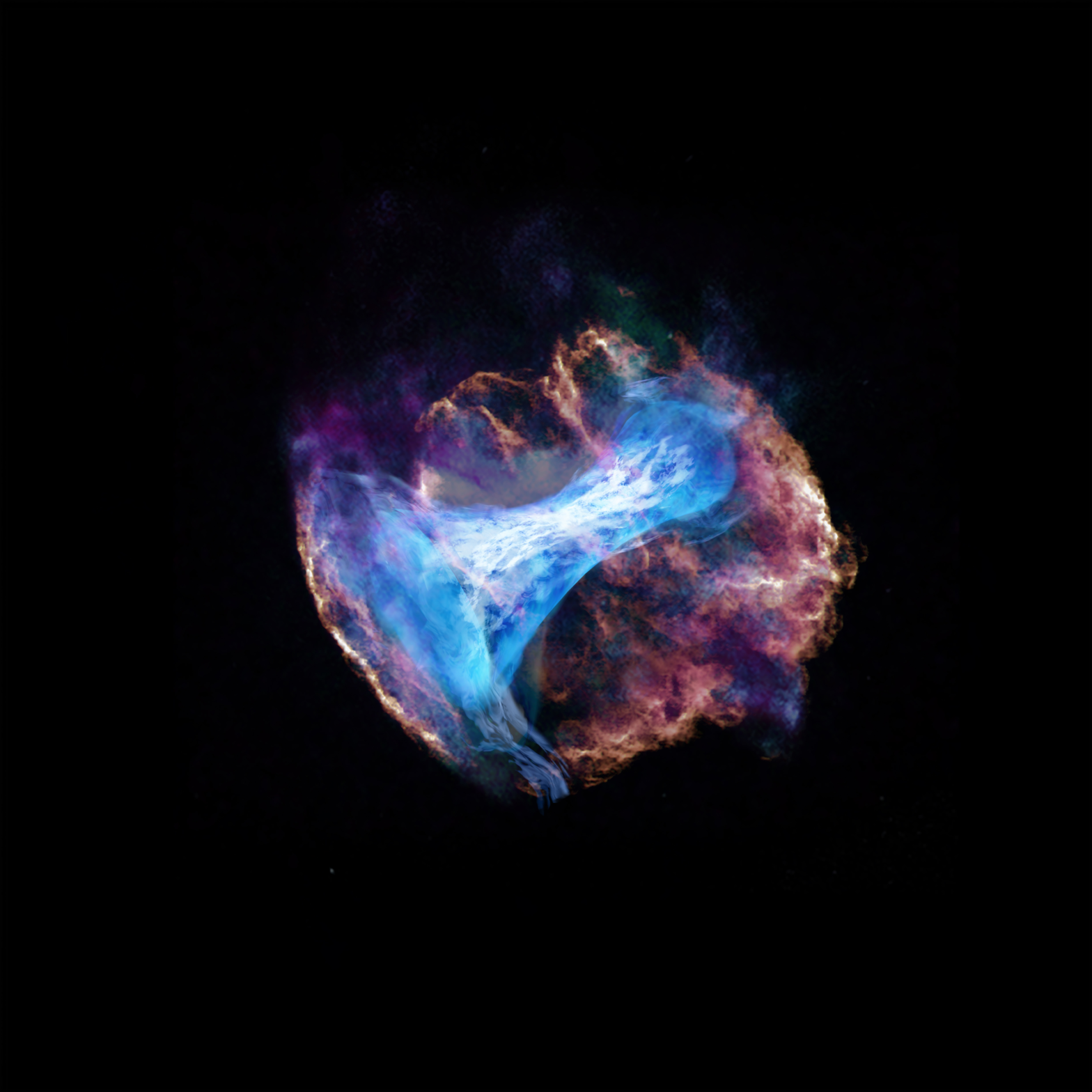Key Points
- Using XRISM*1, the latest high-precision X-ray spectroscopic imaging satellite developed by JAXA, researchers conducted detailed observations of a stellar-mass black hole in the Milky Way.
- For the first time, the team detected highly ionized gas absorption lines*2 in the faintest X-ray state ever observed for such a system.
- Thanks to XRISM’s unprecedented spectral resolution, the team revealed the complex structure and motion of hot gas surrounding the black hole’s accretion disk, providing new insights into the dynamic activities of black holes.

XRISM includes Resolve, a state-of-the-art soft X-ray spectrometer capable of measuring X-ray energies with unprecedented precision. Shortly after beginning regular operations, the team observed 4U 1630-472, a black hole X-ray binary located in the constellation Norma*4. Over roughly 25 hours from February 16–17, 2024, XRISM observed the system just before it returned to quiescence at the tail end of an outburst, when its X-ray brightness had already dropped to about one-tenth of its peak.
Observing transient phenomena required quick coordination. The team performed daily monitoring of black hole X-ray binaries using wide-field X-ray instruments, then worked closely with XRISM’s operations team to adjust the schedule at short notice, making this observation possible.
The resulting spectra showed clear absorption lines from highly ionized iron, even at this faint stage. Notably, in the second half of the observation, the absorption grew stronger despite little change in the X-ray brightness.

Analysis indicated that the absorbing gas was located in the outer accretion disk, moving at less than approximately 200 km/s—significantly slower than the roughly 1000 km/s winds seen in brighter phases. At these low speeds, the gas remains gravitationally bound to the black hole. The increase in absorption during the latter half of the observation probably resulted from a localized gas cloud at the disk’s outer edge, possibly formed where the infalling stream from the companion star collided with the disk.
These findings represent the first time that detailed absorption features have been resolved in a black hole X-ray binary at such low luminosity. Thanks to XRISM’s exceptional spectral capabilities, allowed astronomers to map the motion and distribution of hot gas near the black hole in a regime that was previously unreachable.
The results indicate that even when the X-ray output is weak, highly ionized gas may be present—and potentially in motion—around the black hole. This offers valuable insights into the inflow and outflow of gas in the accretion disk and the physical conditions that could trigger wind formation.

These results show that, in the faint state observed here, the high-temperature gas is not escaping the system as a wind. However, in brighter states, 4U 1630-472 has been observed launching powerful, high-speed outflows, raising key questions:
- What exact conditions in luminosity and disk structure trigger the acceleration of gas into fast winds?
- How much mass and energy do such winds inject into their surroundings?
The team’s next goal is to catch future outbursts at different brightness levels with XRISM, enabling them to track how the gas properties change over time. They are now on standby, ready to respond swiftly when the next eruption from a black hole X-ray binary occurs.
Paper Information
- Title: XRISM spectroscopy of the stellar-mass black hole 4U 1630-472 in outburst
- Journal: The Astrophysical Journal Letters
- Authors: Jon M. Miller, Misaki Mizumoto, Megumi Shidatsu, and others
- DOI: 10.3847/2041-8213/ade25c




